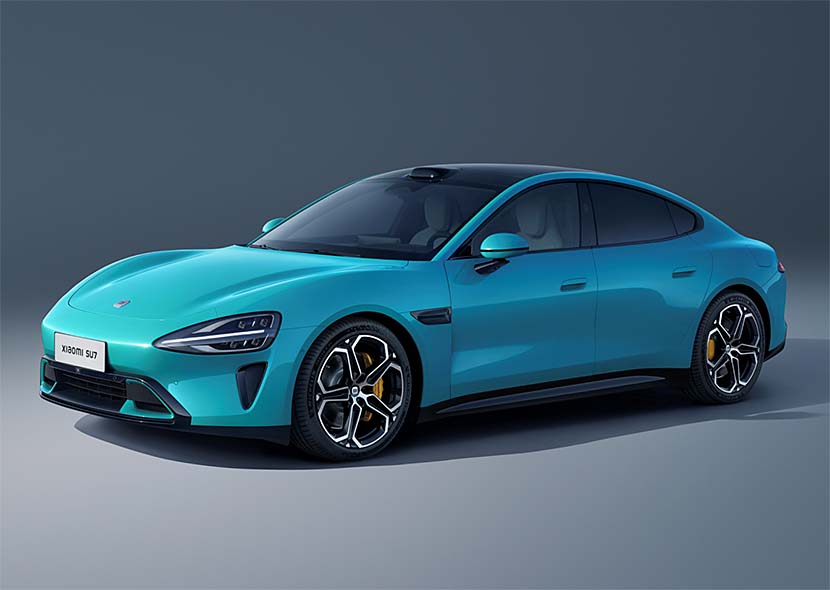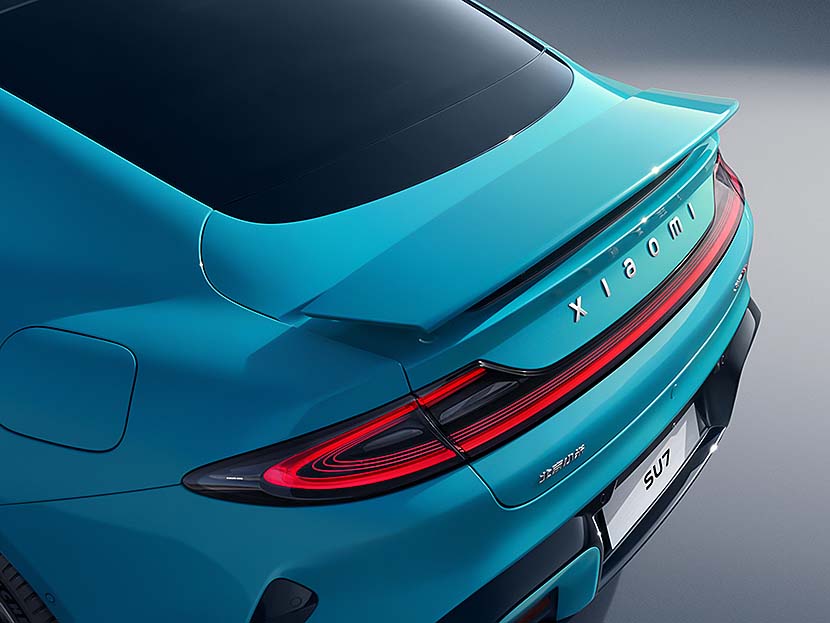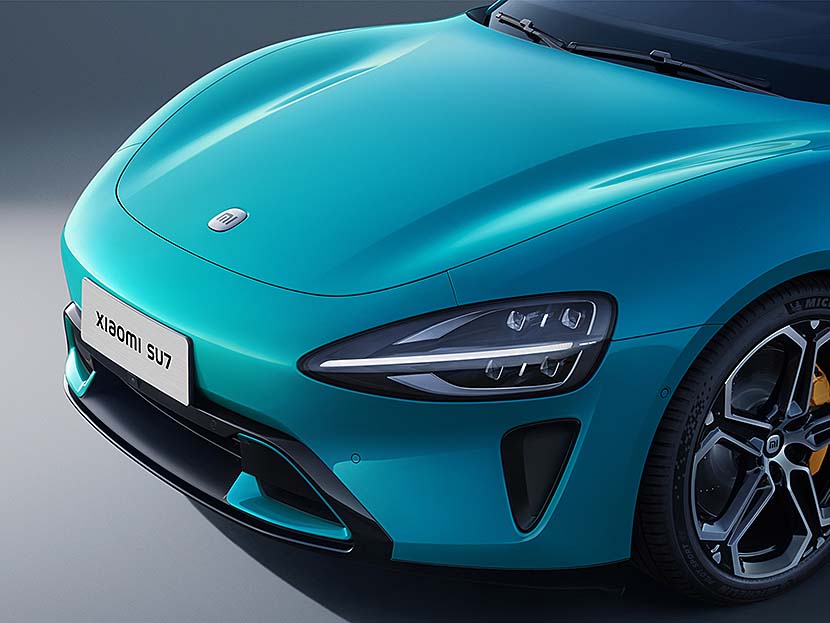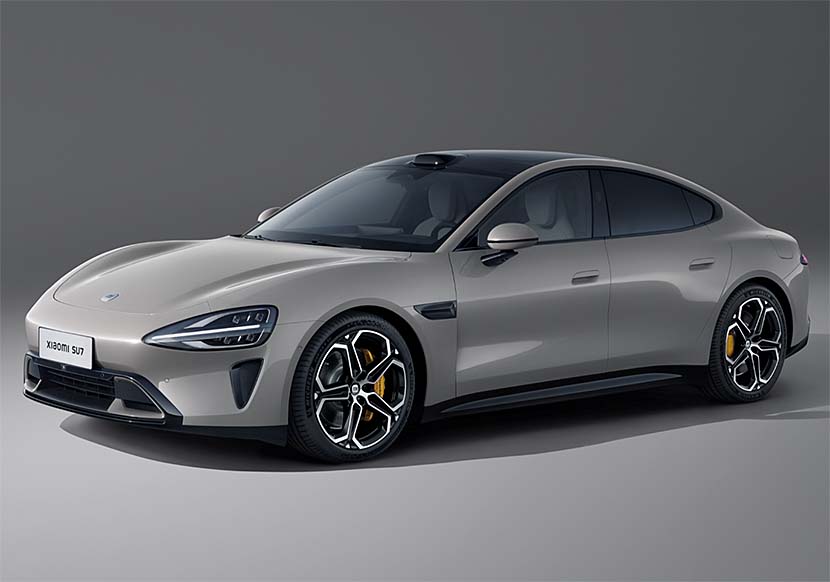
Xiaomi held its Xiaomi EV Technology Launch, officially unveiling Xiaomi EV’s five core technologies – E-Motor, Battery, Xiaomi Die-Casting, Xiaomi Pilot Autonomous Driving, and Smart Cabin. From the development of foundational core technologies, Xiaomi aims to redefine the technology of the automotive industry.
Xiaomi EV’s first product – the highly anticipated Xiaomi SU7, has been “pre-launched,” with its design, performance, range, safety, and other details making a global debut. Positioned as a “full-size high-performance eco-technology sedan,” Xiaomi SU7 aims to push the limits of performance, ecosystem, and mobile smart space.
Redefining the technology stack of the automotive industry
Smart electric vehicles are trending towards integration of the automotive industry with consumer electronics and intelligent ecosystems. Integrating full-stack technologies is a necessary step for the industry’s evolution. Lei Jun stated that by integrating industrial manufacturing, smart software, and AI, Xiaomi EV will completely redefine the automotive industry, marking a significant leap in its technological landscape.
Xiaomi EV is committed to a bottom-up approach, starting from developing foundational core technologies and in-depth independent research in key technology sectors. With a commitment to “tenfold investment, conscientiously building a great car,” Xiaomi EV has invested over 10 billion CNY in the initial research and development phase. The R&D team comprises over 3,400 engineers and over a thousand technical experts in critical domains both in China and abroad. This conference unveiled breakthroughs in the development of Xiaomi EV’s five core technologies. In key sectors such as E-Motor, Battery, Xiaomi Die-Casting, Xiaomi Pilot Autonomous Driving, and Smart Cabin, numerous Xiaomi EV’s self-developed technologies have become first-of-kind globally or domestically. This showcases Xiaomi’s 13 years of comprehensive technological accumulation since its inception.

E-motor
Xiaomi unveiled its cutting-edge E-motors at a recent conference, showcasing the independently developed HyperEngine V6/V6s and HyperEngine V8s. These motors leverage groundbreaking technologies like Bidirectional Full Oil Cooling, S-shaped oil circuit design, and innovative silicon steel laminations. They surpass the performance of traditional V8 and V6 powertrains, setting new benchmarks in the industry. The HyperEngine V8s specifically stands out, boasting global records with a maximum speed of 27,200 rpm, 425kW output, and 635N·m peak torque. Achieving this standard involved using ultra-high-strength silicon steel plates and groundbreaking cooling designs, doubling the heat dissipation area for the stator and increasing the cooling effect by 30°C for the rotor.
Expected to be mass-produced for Xiaomi’s EVs by 2025, the HyperEngine V8s marks a significant leap in E-motor technology. Alongside this powerhouse, the HyperEngine V6/V6s motors demonstrate industry-leading rotational speeds of 21,000 rpm, outperforming current mass-produced electric motors. The HyperEngine V6 generates 299PS power and 400N·m torque, while the V6s achieves an impressive 374PS power and 500N·m torque. These motors promise exceptional performance and highlight Xiaomi’s commitment to pushing the boundaries of electric propulsion technology.
Battery
Xiaomi has pioneered the CTB Integrated Battery Technology, a cutting-edge system achieved through Inverted Cell Technology, elastic interlayers, and streamlined wiring. This innovation showcases a remarkable 77.8% battery integration efficiency, setting a global benchmark, and delivering an overall performance boost of 24.4%. It stands out with a reduced height of 17mm, supporting a maximum battery capacity of 150 kWh and an extraordinary theoretical recharge range surpassing 1200 km, marking a significant advancement in battery technology. To prioritize safety during extended travel, Xiaomi implements stringent safety standards, including a pressure relief valve for emergency energy release and a robust 14-layer protection system.
Heat management is a critical focus, and Xiaomi addresses it through a dual-side water cooling solution, expanding the cooling area to 7.8m²—four times the industry norm. This system also integrates 165 aerogel insulation pieces on the battery cell sides, capable of resisting temperatures up to 1000°C. Furthermore, their Battery Management System (BMS) achieves the highest functional safety level (ASIL-D), incorporating three independent thermal runaway monitors, continuous early warning systems, and rigorous testing protocols exceeding international standards, ensuring top-tier reliability and safety for Xiaomi’s batteries.

Xiaomi Die-Casting
Xiaomi has unveiled its self-developed Xiaomi Die-Casting T9100 cluster and proprietary die-casting alloy material, Xiaomi Titans Metal, making it the only domestic automaker simultaneously self-researching both large die-casting and materials.
Xiaomi Die-Casting T9100 covers an area of 840m², with a total weight of 1050t and a locking force reaching 9100t. Xiaomi has developed a foundation model quality judgment system that can complete inspections of individual pieces within 2 seconds, offering an efficiency ten times higher than manual inspection. The application of this cluster enables a remarkable achievement for the Xiaomi EV, with the rear underbody integrating 72 components into one, reducing welded joints by 840, decreasing overall car weight by 17%, and significantly reducing production hours by 45%.
In material research and development, Xiaomi has developed Xiaomi Titans Metal, a high-strength, high-resilience, heat-treated die-casting material. Xiaomi’s self-developed “Multi-Material Performance Simulation System” selects the optimal alloy formula from 10.16 million possibilities, ensuring a perfect combination of strength, resilience, and stability.
While the industry focuses on the tonnage of die-casting clamping pressure, Xiaomi is steadfastly pursuing a full-stack self-researched path. From materials and equipment clusters to finished castings, Xiaomi has completed nearly all aspects of the large die-casting industrial chain.
Xiaomi Pilot Autonomous Driving
In terms of autonomous driving, Xiaomi has pioneered three key technologies: Adaptive BEV Technology, Road-Mapping Foundational Model, and Super-Res Occupancy Network Technology.
Adaptive BEV Technology is an industry-leading innovation that invokes different perception algorithms based on scenarios. The perception grid has a minimum granularity of 5cm and a maximum of 20cm, with a recognition range extending from 5cm to 250m. This technology ensures wider visibility in urban scenarios, extended vision in high-speed scenarios, and more precision in parking scenarios.
Road-Mapping Foundational Model revolutionizes traditional methods of perceiving road conditions. This model not only recognizes them in real-time and intelligently switches to a more reasonable driving trajectory but can also navigate smoothly in complex intersections without relying on high-definition maps thanks to learning from complex intersection scenarios and experienced driver habits.
In terms of obstacle recognition, Xiaomi’s Super-Res Occupancy Network Technology achieves unlimited categories of recognition for irregular obstacles. Compared to traditional networks that interpret obstacles as blocks, Xiaomi’s innovative vector algorithm simulates all visible objects as continuous curved surfaces. This improves recognition accuracy to as low as 0.1m. Additionally, Xiaomi’s self-developed one-click noise reduction feature eliminates the impact of rain and snow on recognition, significantly reducing the probability of misidentification.

Smart Cabin
Xiaomi EV Smart Cabin adopts a “human-centric” interaction architecture and features a 16.1-inch 3K central console, a 56-inch HUD head-up display, a 7.1-inch rotating dashboard, and two seat-back extension mounts that allow for the mounting of two tablet devices. It is equipped with the Snapdragon 8295 in-car chip with AI computing power of up to 30 TOPS, enabling an ultimate interactive experience with the linking of five different screens.
The interactive experience of Xiaomi Smart Cabin is similar to tablets, allowing users to quickly adapt without the need for a learning curve. The system operates exceptionally smoothly, with the vehicle OS launching in a rapid 1.49 seconds after the door is unlocked. Additionally, it offers seamless cross-device connection between smartphones and the EV. For example, when the phone is brought into the cabin, the console automatically displays an icon, enabling easy access to the phone’s interface with a single touch.
“Technology x Ecosystem” leads the evolution of EVs towards smart mobile spaces
During the presentation, Lei Jun shared Xiaomi’s automotive goal: to craft a dream car for the new era of the automotive industry – a vehicle that is aesthetically pleasing, enjoyable to drive, comfortable, smart, and safe.
Representing the epitome of technology, experience, and aesthetics, the “trinity” dream car, Xiaomi SU7, is positioned as a “full-size high-performance eco-technology sedan,” It aims to achieve high performance, eco-technology capabilities, and a comprehensive mobile smart space experience.
Xiaomi SU7 emerges as a pinnacle of performance with cutting-edge technology and advanced driving experiences. With a self-developed E-motor – HyperEngine, CTB Integrated Battery Technology, and a series of challenging technological innovations, such as the body structure manufactured from the Xiaomi Die-Casting T9100 die-casting cluster, Xiaomi SU7 Max achieves a zero-to-hundred acceleration in an impressive 2.78 seconds, firmly placing itself in the “sub-2-second supercar” club, while being capable of reaching an astonishing top speed of 265 km/h.
Completing the “Human x Car x Home” smart ecosystem
At the end of October this year, Xiaomi announced a comprehensive upgrade of its group strategy, transitioning from “Smartphone x AIoT” to the “Human x Car x Home” smart ecosystem, with automobiles becoming a crucial component of Xiaomi’s strategic focus.
The “Human x Car x Home” smart ecosystem is a comprehensive integration of scenarios involving people, cars, and homes, facilitating seamless connectivity of hardware devices, real-time coordination, and driving collaboration among industry partners. Lei Jun announced during this conference that with the addition of Xiaomi EV, the “Human x Car x Home” smart ecosystem has officially been completed.
The ecosystem enables mutual collaboration and evolution among individuals, devices, and intelligent services within the ecosystem. Leveraging HyperConnect cross-device connectivity, Xiaomi HyperOS seamlessly integrates over 200 product categories, including Xiaomi EV. The ecosystem coverage extends to over 95% of users’ daily scenarios, allowing intelligence to intricately serve each individual. Simultaneously, with AI empowerment, Xiaomi HyperMind serves as the center for intelligent reasoning and can perceive and learn from usage, providing automated, proactive solutions.
Lei Jun stated that Xiaomi’s entry into the automotive industry marks a significant leap. This represents a long-term commitment and deep investment in foundational core technologies, a coming-of-age moment for Xiaomi’s modern industrial intelligent manufacturing capabilities, and most importantly, a crucial step in completing the “Human x Car x Home” smart ecosystem.
![]()







